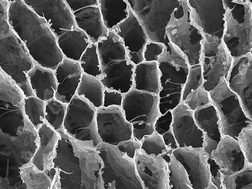Fabrication of ice-templated macroporous TiO2–chitosan scaffolds for photocatalytic applications†
Abstract
Higher-ordered 3D macroporous TiO2-functionalized chitosan scaffolds were prepared by ice segregation induced

* Corresponding authors
a Department of Chemistry, Faculty of Science, Prince of Songkla University, Hat Yai, Songkhla, Thailand
b
Centre for Organized Matter Chemistry, School of Chemistry, University of Bristol, Bristol, UK
E-mail:
s.mann@bristol.ac.uk, Avinash.patil@bristol.ac.uk
Higher-ordered 3D macroporous TiO2-functionalized chitosan scaffolds were prepared by ice segregation induced

 Please wait while we load your content...
Something went wrong. Try again?
Please wait while we load your content...
Something went wrong. Try again?
C. Suwanchawalit, A. J. Patil, R. K. Kumar, S. Wongnawa and S. Mann, J. Mater. Chem., 2009, 19, 8478 DOI: 10.1039/B912698H
To request permission to reproduce material from this article, please go to the Copyright Clearance Center request page.
If you are an author contributing to an RSC publication, you do not need to request permission provided correct acknowledgement is given.
If you are the author of this article, you do not need to request permission to reproduce figures and diagrams provided correct acknowledgement is given. If you want to reproduce the whole article in a third-party publication (excluding your thesis/dissertation for which permission is not required) please go to the Copyright Clearance Center request page.
Read more about how to correctly acknowledge RSC content.
 Fetching data from CrossRef.
Fetching data from CrossRef.
This may take some time to load.
Loading related content
